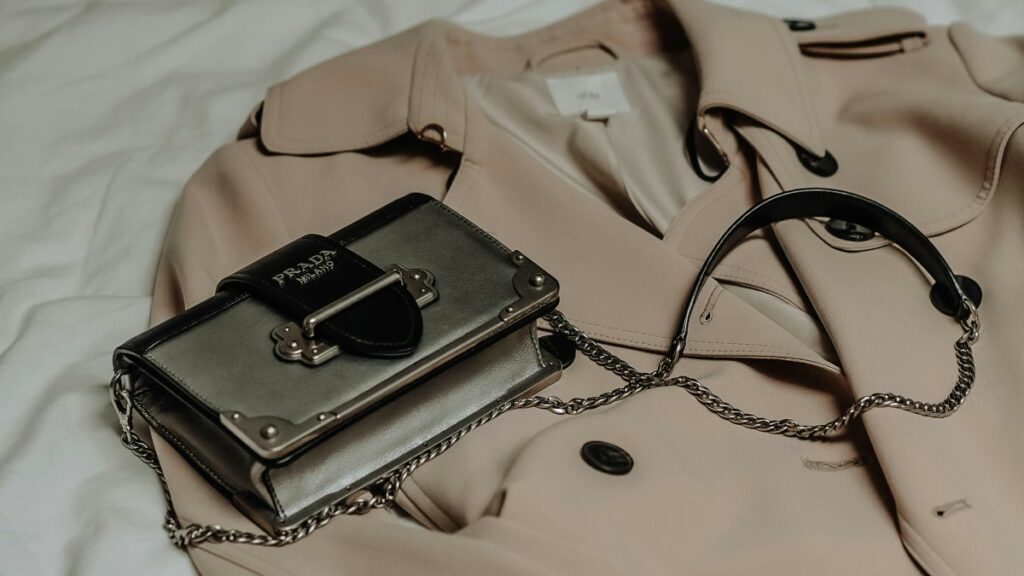
What sets the most famous clothing designers apart? This article explores the masters, whose creativity and craftsmanship have earned them a permanent place in fashion history.
Key Takeaways
- Prominent fashion designers such as Ralph Lauren, and Giorgio Armani have shaped fashion trends and inspired generations with their innovative and time-defining designs.
- Designers have also played significant roles outside traditional fashion boundaries, influencing areas like Hollywood, sports apparel, and even social and environmental advocacy.
- The success and impact of each designer profiled are marked by unique contributions to the fashion industry, ranging from revolutionizing haute couture and ready-to-wear to creating iconic brand symbols and blending fashion with social commentary.
Introduction
Certain individuals in the vast realm of fashion have left an indelible mark on the industry. Known as top fashion designers, these famous designer icons have shaped trends, challenged norms, and inspired generations with their innovative designs and creative prowess. This article profiles some of the most renowned designers in the world, whose contributions have left an enduring legacy in the world of fashion:
- Giorgio Armani
- Ralph Lauren
- Christian Dior
- Vivienne Westwood
- Tom Ford
- Calvin Klein
- Marc Jacobs
- Miuccia Prada
Previous discussions have shed light on the journeys of eminent fashion designers like Yves Saint Laurent, Alexander McQueen, Gianni Versace and the unparalleled Coco Chanel. However, the fashion landscape is teeming with luminaries, each reshaping it with their unique vision. This article widens the lens, profiling selected designers who have not only dominated but also redefined the fashion world, some even being the only fashion designer in their niche. The ensuing sections unfold stories of triumph, transformation, and transcendence, weaving together the fabric of fashion history.
The Italian Maestro: Giorgio Armani
Giorgio Armani, the master of tailoring, founded his eponymous fashion house in 1975, immediately establishing a reputation for clean, tailored lines that resonated with a sense of timeless elegance. Afterwards, his luxury ready-to-wear collections made more accessible through a partnership with Gruppo Finanzario Tessile in 1978, marked a pivotal moment in the expansion of his brand. Armani’s influence extended beyond Italy’s borders in 1979 when he introduced his lines to the United States, securing his status as a global fashion icon.
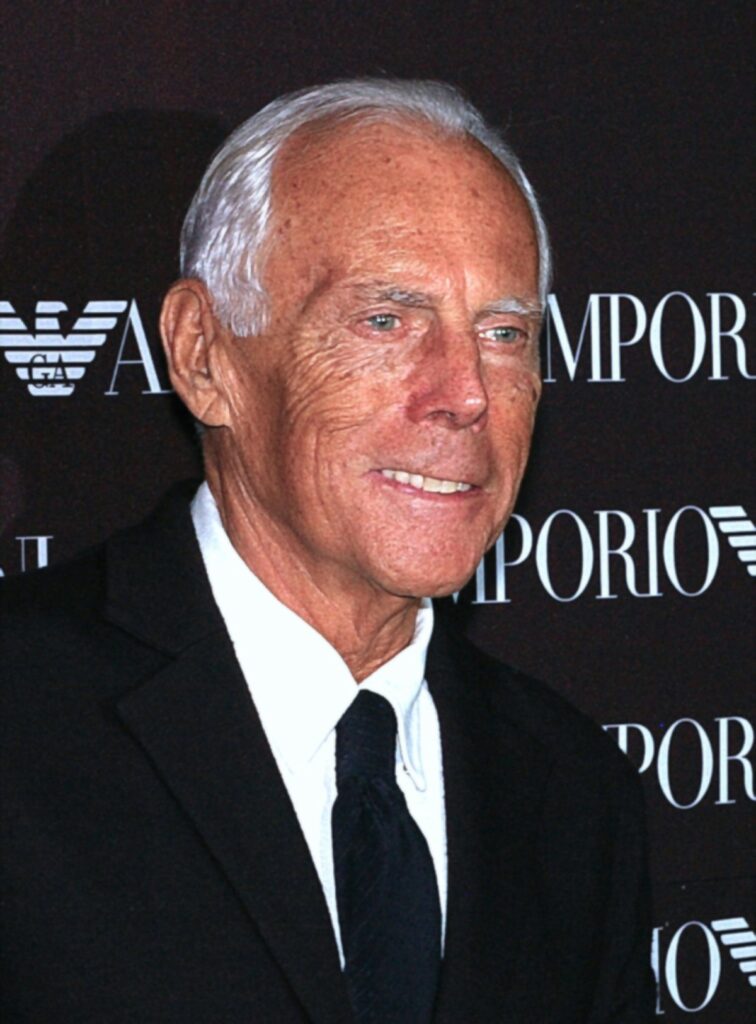
Armani captured the fashion world’s attention by dressing Hollywood’s elite, starting with Diane Keaton’s attire at the 50th Academy Awards. This marked the beginning of a trendsetting relationship with Hollywood that would thrive for decades. Moreover, his forward-thinking marketing strategies, which included television advertisements and street banners, widened the appeal of his brand and solidified his presence in the fashion industry. The silver screen further amplified Armani’s reach when ‘American Gigolo’ garbed Richard Gere in his designs, presenting the Armani vision to audiences worldwide.
Armani’s influence wasn’t confined to the catwalk or the red carpet; it spilt over into the world of sports fashion. He also designed football uniforms and Olympic team wear, demonstrating his versatility and appeal across diverse domains. And with the collaboration with Scuderia Ferrari, the Armani brand became intertwined with the high-octane world of Formula 1 motor racing. Overall, from elegant eveningwear to versatile collections, his fashion house offers a rich tapestry of products, and the Guggenheim Museum’s exhibition of his work is a testament to his esteemed status in the high fashion world.
Ralph Lauren: Defining American Style
Ralph Lauren, a quintessential American designer, has emerged as a defining force in the fashion industry. He has created a philosophy of timeless, natural elegance, surpassing transient trends. His breakthrough came with the introduction of wide, vibrant ties—a stark contrast to the narrow, monochromatic styles of the 1960s—and the subsequent launch of his Polo line. It was the Polo shirt, born in the 1970s, that became an indelible symbol of his brand, emblazoned with the now-iconic polo logo.

Lauren’s inspiration drew heavily from the Ivy League’s collegiate style, which he transformed from an exclusive, traditional look into an accessible, highly coveted fashion that reached a broader audience. Beyond his iconic designs, Lauren has shown a commitment to social causes. Additionally, his support for breast cancer research is profound, with the establishment of the Pink Pony line contributing to cancer care in underprivileged communities.
Overall, the Ralph Lauren brand encapsulates the spirit of American fashion, its influence weaving through the very fabric of the country’s cultural identity. From the preppy polos to the elegant eveningwear, Ralph Lauren’s style narrative is a testament to his visionary approach and contribution to the fashion landscape.
Christian Dior’s Haute Couture Revolution
Few names stand as tall as Christian Dior in the pantheon of fashion. His sartorial genius, which started with the sale of his sketches to couture houses in the 1930s, led him to establish the House of Dior in 1947. This move came in the wake of the overwhelming success of his ‘New Look’ collection. This revolutionary style prominently featured calf-length skirts and cream jackets that cinched at the waist, alongside the introduction of groundbreaking silhouettes like the A-line and H-line, reshaping women’s fashion post-World War II.

The House of Dior became synonymous with luxury and haute couture, with Dior’s legacy being perpetuated by a lineage of creative directors who infused their distinct styles into the brand. International boutiques and a clientele that included royalty and celebrities were a testament to the brand’s emblematic status. Additionally, Dior’s haute couture creations, known for their fine fabrics and meticulous tailoring, symbolized his relentless pursuit of elegance and innovation in the fashion industry.
Overall, Christian Dior’s impact on women’s fashion is indelible, with his innovative designs and bold silhouettes continuing to inspire designers and fashion lovers alike. The legacy of the House of Dior endures, a testament to the revolutionary vision of its founder and the timeless allure of haute couture.
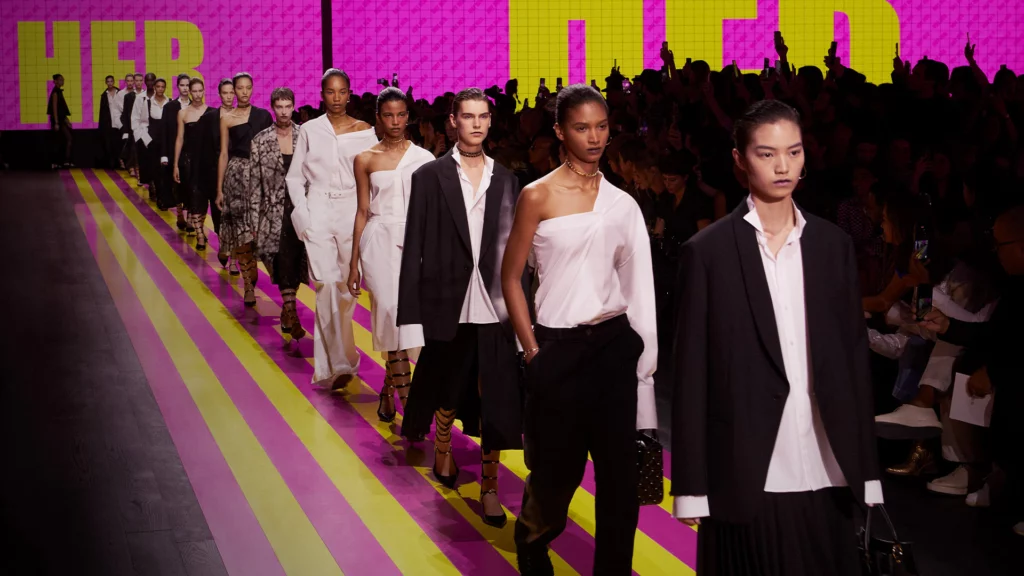
Tom Ford’s Transformation of High Fashion
During Tom Ford’s tenure as creative director at Gucci, the brand’s image transformed from minimalist to a vibrant, retro-inspired aesthetic radiating sex appeal. His influence stretched beyond one fashion house, impacting Yves Saint Laurent as well, where his bold and glamorous designs captivated the fashion world. Ford’s knack for self-promotion was evident when he posed in underwear on the cover of Vanity Fair in 2006, creating an indelible buzz for his own fashion brand.
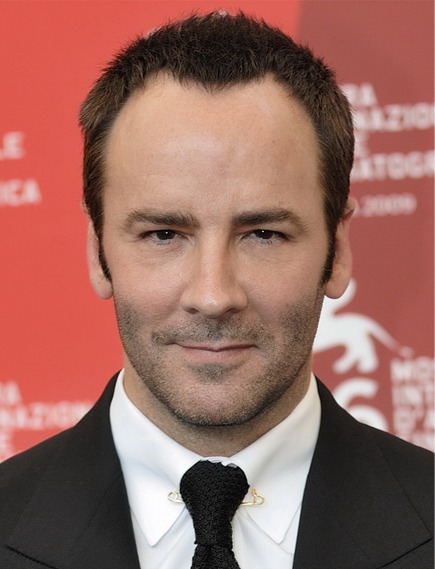
Winning the Best International Designer award in 2000, Ford solidified his reputation as a top fashion designer and a prominent British designer, one who had not only transformed the brands he touched but also successfully launched his own label, becoming synonymous with luxury and high fashion. His tailored lines and bold aesthetics have become hallmarks of his brand, reflecting his unique vision for contemporary fashion.
Moreover, Tom Ford’s journey from creative director at two of the most prestigious fashion houses to the head of his own successful brand is a narrative of innovation and transformation. His influence on high fashion is also marked by a distinctive style that blends luxury with a modern sensibility, making him one of the most acclaimed fashion designers of our time.
Vivienne Westwood: Punk Fashion’s Leading Lady

Vivienne Westwood’s rise to fashion stardom began in 1971 with her boutique’s launch on Kings Road. Her store quickly became the British punk rock scene’s epicenter, clothing the Sex Pistols and evolving with the movement. As her designs evolved, so did her influence. Some key moments in her career include:
- Her 1981 ‘Pirates’ collection, which marked a departure from punk
- By the 1990s, her work masterfully blended historical techniques with modern fashion, often parodying the upper classes
- Transitioning into activism, Westwood has used her platform for environmental advocacy
- She has also introduced androgynous styles into mainstream fashion
Globally recognized for her impact on fashion, Westwood has received several accolades, including an OBE in 1992 and a Damehood, with her Buckingham Palace ceremony attendance famously sans underwear. Her rebellious spirit and innovative designs also have cemented her as an influential figure in the fashion world, one who has consistently pushed boundaries and redefined what fashion can be.
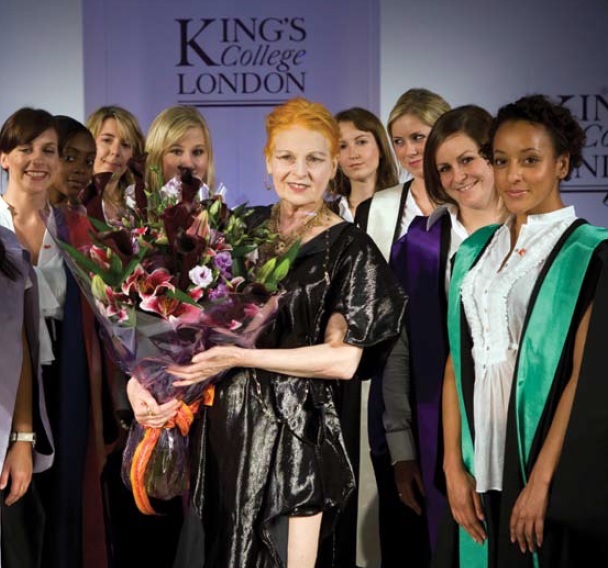
Vivienne Westwood’s role in the fashion industry transcends design; she is an icon of punk fashion and a powerful voice for social and environmental causes. Her legacy is not only in the bold and glamorous designs she brought to the runway but also in her commitment to using fashion as a platform for change.
Calvin Klein’s Minimalist Mastery

Calvin Klein’s minimalist fashion design approach has made a lasting impression on the industry. Overall, his work beautifully epitomizes simplicity and the core qualities of design. Klein’s innovations didn’t stop at clothing; he revolutionized the designer jeans, underwear, and fragrance segments, making designer commodities accessible and affordable, thus broadening their appeal. His advertising campaigns were as provocative as they were pioneering, particularly the 1991 Calvin Klein Jeans supplement for Vanity Fair, which set a new standard in fashion marketing.
Klein’s impact on the fashion world has been recognized through numerous accolades, including being named one of the most influential Americans by Time Magazine in 1996 and receiving awards like the Coty American Fashion Critic’s Award and the CFDA’s Lifetime Achievement Award. The Calvin Klein flagship store in Manhattan, a reflection of the brand’s minimalist aesthetic, has also influenced interior and textile design.
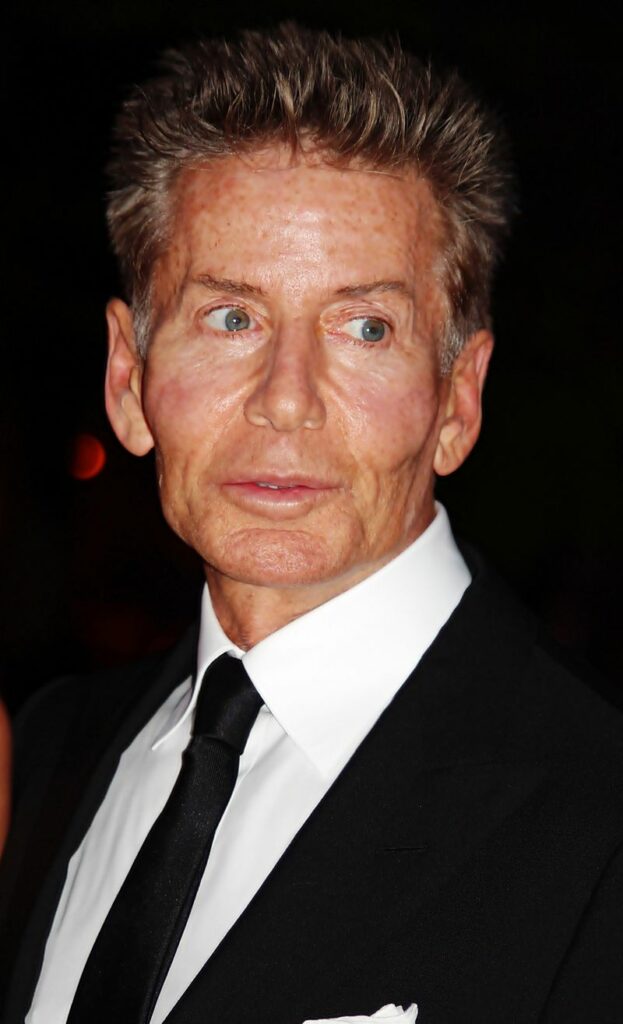
After the acquisition of Calvin Klein, Inc. by Philips Van Heusen Corporation in 2003, Klein continued to guide the brand’s design direction as a creative consultant until 2006, ensuring the brand’s vision remained true to its minimalist roots. His mastery of minimalism has not only defined his brand but has also had a lasting influence on the fashion industry as a whole. Some of his contributions include:
- Introducing clean lines and simple silhouettes
- Emphasizing quality materials and craftsmanship
- Incorporating neutral colors and monochromatic palettes
- Championing the concept of “less is more”
Klein’s designs continue to inspire and resonate with consumers worldwide.
Miuccia Prada: Innovator and Trendsetter
Miuccia Prada, a powerful force in the fashion world, assumed control of the family-owned luxury goods manufacturer in 1978. Her innovative approach and trendsetting designs catapulted the Prada brand to unprecedented heights. Her accomplishments include:
- Her first successful handbag design in 1985
- The launch of Prada’s first women’s ready-to-wear collection in 1989
- The introduction of the Miu Miu line in 1992, inspired by her personal style, offering a less expensive range that appealed to a younger demographic
These achievements solidified Miuccia’s status as an innovator in the fashion industry.
In 2020, Miuccia Prada presented her final solo collection as the creative director of Prada, before transitioning to share the role with Raf Simons, marking a new chapter for the brand. Her trailblazing work in fashion also has been recognized with major awards, including the International Award from the CFDA and being named Woman of the Year by Glamour USA.

Miuccia Prada’s transformative leadership has not only redefined the Prada brand but has also had a significant impact on the fashion industry as a whole. Her designs, characterized by bold and glamorous aesthetics, have challenged and reshaped the fashion landscape, cementing her as one of the most acclaimed fashion designers of our time.
Marc Jacobs: The Eclectic American Fashion Designer
Marc Jacobs embarked on his fashion journey with impressive early accomplishments, including winning the Perry Ellis Gold Thimble Award and receiving the title of Design Student of the Year at Parsons School of Design in 1984. His early experience in the avant-garde New York City boutique Charivari paved the way for his future success in the industry.

Jacobs’ rise to prominence was marked by his appointment as creative director for Louis Vuitton in 1997, where he introduced the brand’s first ready-to-wear line, and the launch of his own line, Marc by Marc Jacobs, in 2001. Jacobs’ work with Louis Vuitton was further distinguished by collaborations with artists like Stephen Sprouse and Takashi Murakami, creating collections that blended fashion with art.
Despite his departure from Perry Ellis following a critically acclaimed ‘grunge’ collection that led to his dismissal due to commercial failure, Jacobs continued to shape the fashion world, leaving Louis Vuitton in 2013 to focus on his own brand.
The recognition of Marc Jacobs’ contributions to fashion was epitomized when he received MTV’s first ‘Fashion Trailblazer Award’ at the 2019 Video Music Awards. He has also expanded his brand with the launch of Heaven in 2020, a polysexual line that challenges traditional gender boundaries. Jacobs’s influence on the fashion industry reflects the broader evolution from bespoke clothing to global mass production, demonstrating the transformative power of design in the modern world.
Summary
To sum up, as we conclude our exploration of the fashion icons who have shaped the industry, it’s clear that each designer has woven a unique thread into the fabric of fashion history. From Armani’s tailored elegance to Westwood’s punk rebellion, these designers have not only created clothing but have also crafted cultural narratives that resonate across generations. Their contributions have redefined style, challenging norms and setting new standards for beauty and elegance.
Moreover, these luminaries have left an enduring legacy, their names synonymous with innovation, creativity, and influence. They have transformed the fashion industry, with their designs becoming timeless symbols of refinement and sophistication. Aspiring designers and fashion enthusiasts also look to these icons for inspiration, learning from their stories of triumph and transformation.
The legacies of these fashion icons endure, each designer’s vision contributing to the tapestry that is the fashion world. They remind us that fashion is more than just the clothes we wear—it’s an expression of our identity, a statement of our era, and a reflection of our aspirations. Moreover, their stories inspire us to embrace our own creativity and leave our mark on the world, just as they have done so indelibly in theirs.
Frequently Asked Questions
Who is the biggest name in fashion?
Louis Vuitton is considered one of the biggest names in fashion, followed by brands like Chanel, Gucci, and Dior. These brands are some of the most prominent and influential in the fashion industry.
What are the top 10 fashion brands in the world?
The top 10 fashion brands in the world are: Nike, Louis Vuitton, Chanel, Gucci, Adidas, Hermès, Dior, and Cartier, based on their respective valuation in 2023.
Who are the top 10 high-end fashion designers?
The top 10 high-end designers are Louis Vuitton, Dior, Gucci, Prada, Rolex, Hermès, Tom Ford, Armani, Saint Laurent, and Burberry. These brands are renowned for their luxury and high-quality products.
How did Giorgio Armani first become popular in the United States?
Giorgio Armani first gained popularity in the United States in 1979 when he introduced his fashion lines there, and further solidified his brand’s appeal by dressing Richard Gere in the film ‘American Gigolo’, setting a trend for celebrity dressing.
What was Ralph Lauren’s major contribution to American fashion?
Ralph Lauren’s major contribution to American fashion is his philosophy of creating timeless, elegant, and natural clothing, epitomized by his iconic Polo shirt. His designs transformed traditional, elite looks into fashionable attire accessible to a wider audience.





Leave a Reply